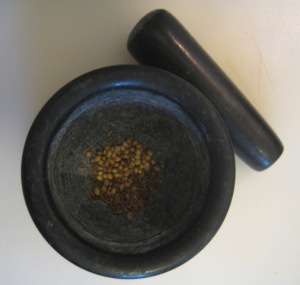This may seem like a simple task, but there are a number of variables to consider. Clearly, the most important thing is the timing, but this is impacted on by several other factors.
In order for the timing to have any meaning, the eggs should always be boiled from room temperature. In addition, this means they are less likely to crack on entering the water.
Putting a pin prick through the egg shell at one end also helps to stop it from cracking by releasing pressure build up. I also find that doing this, or rather not doing it has implications on the timing. When I was a kid I was taught to do this, but in recent years I got lazy about it. I found that soft boiling an egg could take anywhere between 4 and 7 minutes. About a year ago I decided to try the technique out again for boiled eggs and soldiers, left the egg in for 6 minutes and it came out almost hard-boiled. It was then I realised that the pin prick must also have an effect on the rate at which the egg cooks. Now that I have started pricking them again, the timing process has become much more reliable.
Assuming the above rules have been followed, I recommend 4 minutes for a runny egg with soft (but not raw) whites, 5 mins for firm whites and a reasonably soft yolk, 6 mins for almost hard-boiled, i.e. with a yolk that is almost cooked through but slightly soft in the centre (this is ideal for salads), and 7 mins for hard-boiled.
Delia Smith also has a couple of helpful tips:
- The water should be a gentle simmer rather than boiling
- The pan should not be too big, otherwise the eggs are more likely to bob around and bump into each other or the sides
- If the eggs are fresh they need an extra 30 seconds on the preferred timing
She also suggests 2 alternative ways of soft boiling eggs, one that involves taking them off after a minute and leaving them in the hot water and the other starting them in cold water. I prefer to just boil them as above - less messing about - but if you're keen to try her methods, have a look at the
tips on her site; like all her suggestions, I am sure they work very well.
 Monday, August 16, 2010 at 11:03PM
Monday, August 16, 2010 at 11:03PM  Vix |
Vix |  2 Comments |
2 Comments | 
